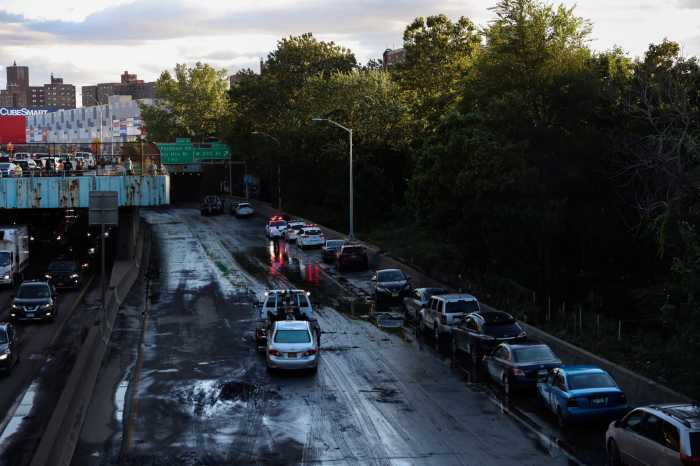In their assessment of New York’s 58 counties and their climate resiliency and vulnerability, state climate officials found that nearly 7 million New Yorkers will be disadvantaged by increasing climate events such as flash floods, rising water levels on the coast and extreme heat.
A plan by the state’s 22-person Climate Action Council is set to be finalized by the end of the year, where state climate officials look to reach zero-emissions in the state’s power sectors by 2040 and by mandating at least an 85% reduction in emissions by 2050.
That plan, however, received massive pushback last Wednesday from Bronxites and local climate advocates at the first of 10 public hearings by the Climate Action Council, as many voiced frustrations with the Council’s progress in climate justice and believe the plans don’t go far enough to do away with harmful fossil fuels and the environmental harm on New York’s most vulnerable communities.
“When we talk climate change, look no further than our asthma allies, our polluted water streams and our flooded streets when there’s a significant weather event,” Samaj Griffin, a Bronx climate activist told the Bronx Times. “We don’t have ten or fifteen years. We only have the present to try and prevent more Bronxites from being victimized by weak climate change policies.”
Manhattan College student Brittany Baker, a resident of Mott Haven which has struggled for decades with air pollution from nearby peaker power plants, said the state needs to think “more urgently” about meeting zero-emission deadlines.
“I mean 2040 might seem like a progressive benchmark for some, but we are struggling to breathe today,” she said. “For too long, our communities (have) been hurt by climate change because of inaction and 20-year timelines that further imperil my generation’s future.”
Attempts to reach members from the Climate Action Council were unsuccessful.

In the Bronx, which has the highest number of Black and brown neighborhoods affected by the instability of climate change in New York City, climate suggestions came in the dozens from accelerating the shut down of South Bronx peaker plants to a meaningful reinvestment into the Bronx’s shoreline communities that inevitably deal with rising sea levels.
The 331-page plan, released Dec. 30, 2021, plans to restructure the economy, housing and transportation, while ensuring climate justice indicatives for communities disparately affected by climate change. The plan sets metrics to increase 6,000 megawatts of solar and 3,000 megawatts of energy storage by 2025, a transition to 70% renewable electric by 2030.
The transition, the plan states, is projected to generate up to $120 billion and add 10 jobs for every job lost compared to inaction. Without a substantive emission-cutting plan in place, the state estimates an estimated cost of $90 billion statewide in response to future climate change events.
The move to achieve these benchmarks calls for substantial investments and regulatory changes to increase renewable energy to power homes, cars and buildings. Doing so would result in job loss in sectors like gas stations, but would result in substantial growth in building and construction, the plan says.
Also in their analysis of climate-disadvantaged communities, New York State Energy and Research Development Agency (NYSERDA) found that census tracts in the Bronx have the highest rates of air pollution in the state.
John Doyle, a 30-year resident of City Island, said future emissions-cutting could be accelerated by providing more reliable public transportation in car-reliant, transit-deserts like the east Bronx.
“It’s worth noting that our east Bronx region has some of the highest rates of automobile ownership in the City, in some neighborhoods almost 75%-85% of residents own a car,” Doyle said. “It should come as no surprise that our area is also a transit desert. To combat this, we need 24/7 bus lines that run frequently and we must expand the NYC Ferry Service to touch on more east Bronx neighborhoods.”
Members of the Clean Energy Jobs Coalition, on behalf of 225,000 union members, are pushing the state to be more aggressive in its effort to transition the state to clean energy through nuclear technology, hydrogen gas and geothermal solutions — in addition to solar and wind farms.
The Coalition said the state’s failure to adequately replace shuttered power plants like emission-free Indian Point Energy Center, or rejecting plant upgrades that would lower emissions, has led to tighter supplies and higher prices for all New Yorkers — and threatens the state’s energy reliability in the near future.
Reach Robbie Sequeira at rsequeira@schnepsmedia.com or (718) 260-4599. For more coverage, follow us on Twitter, Facebook and Instagram @bronxtimes






















